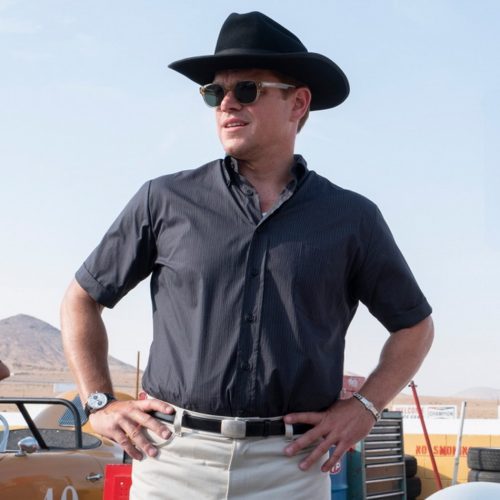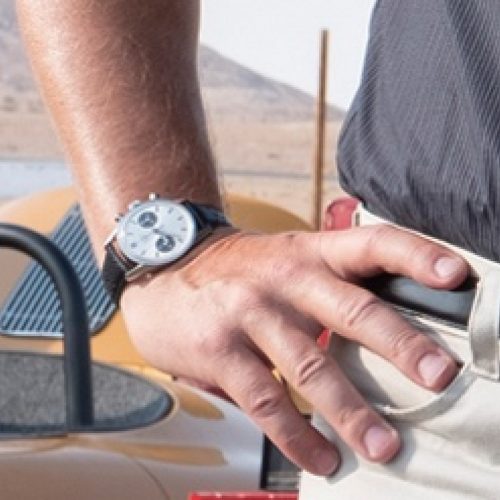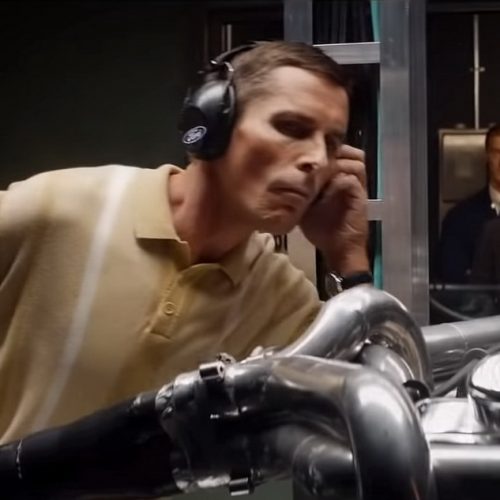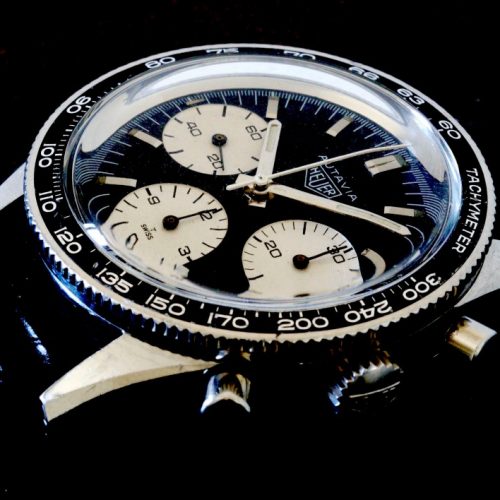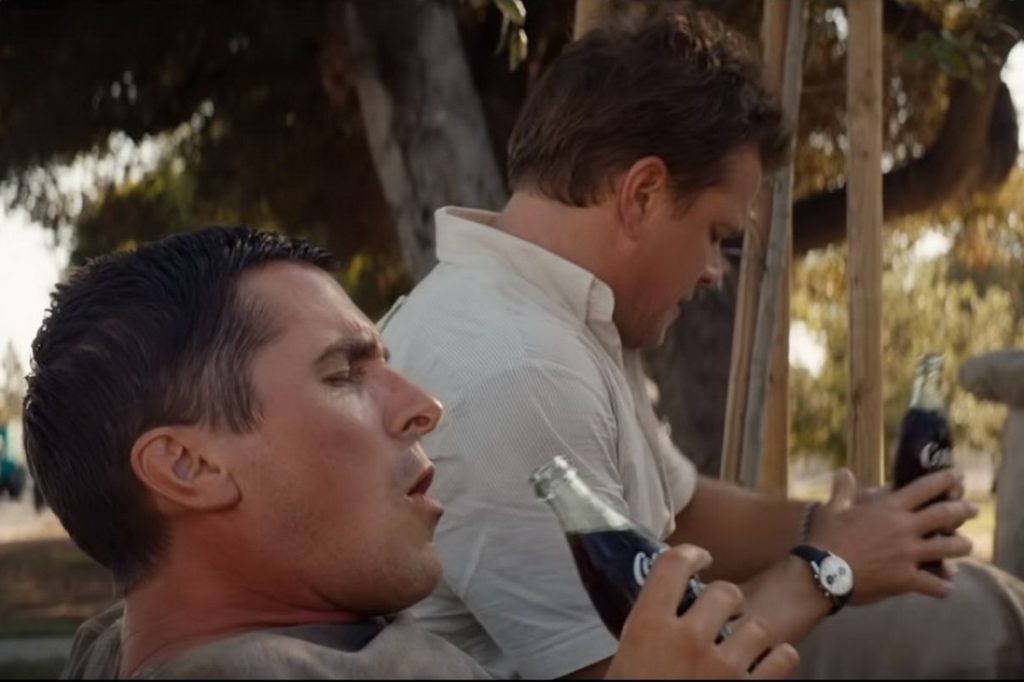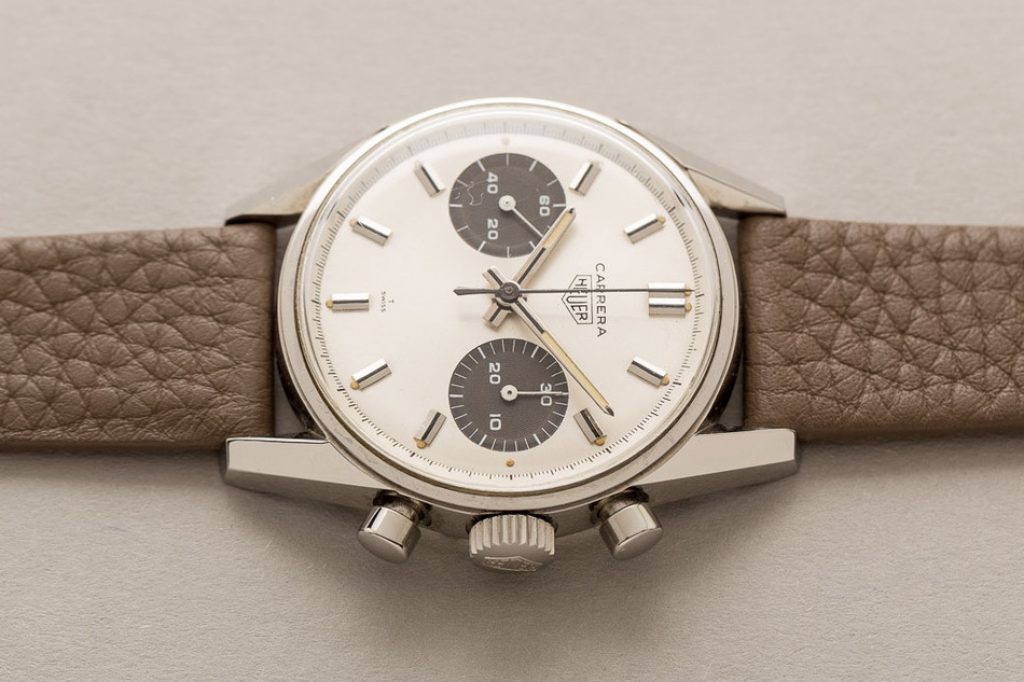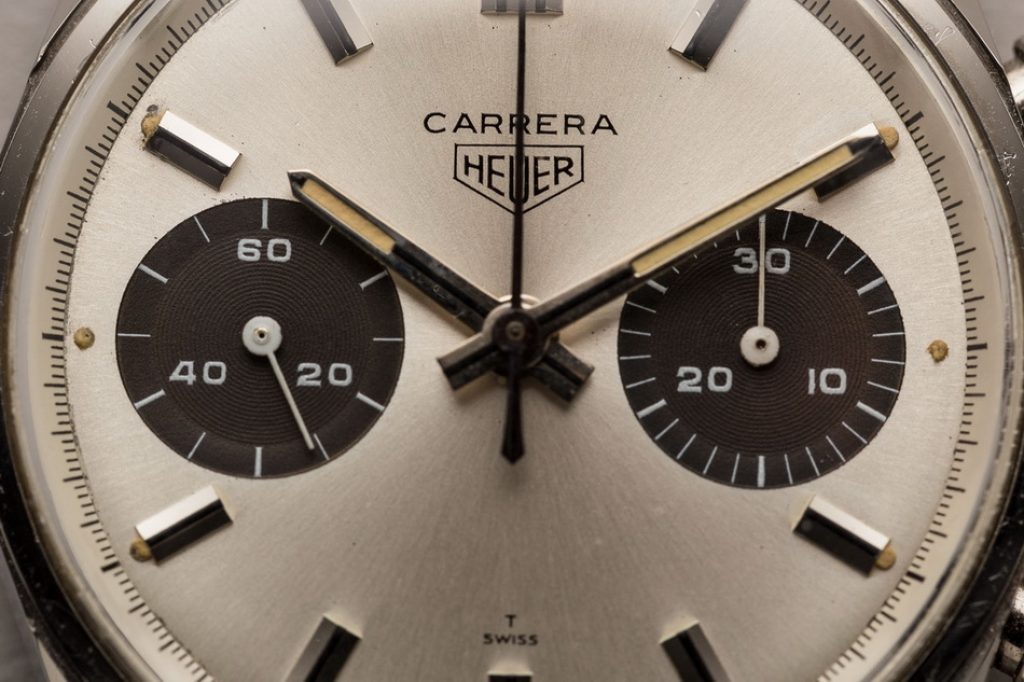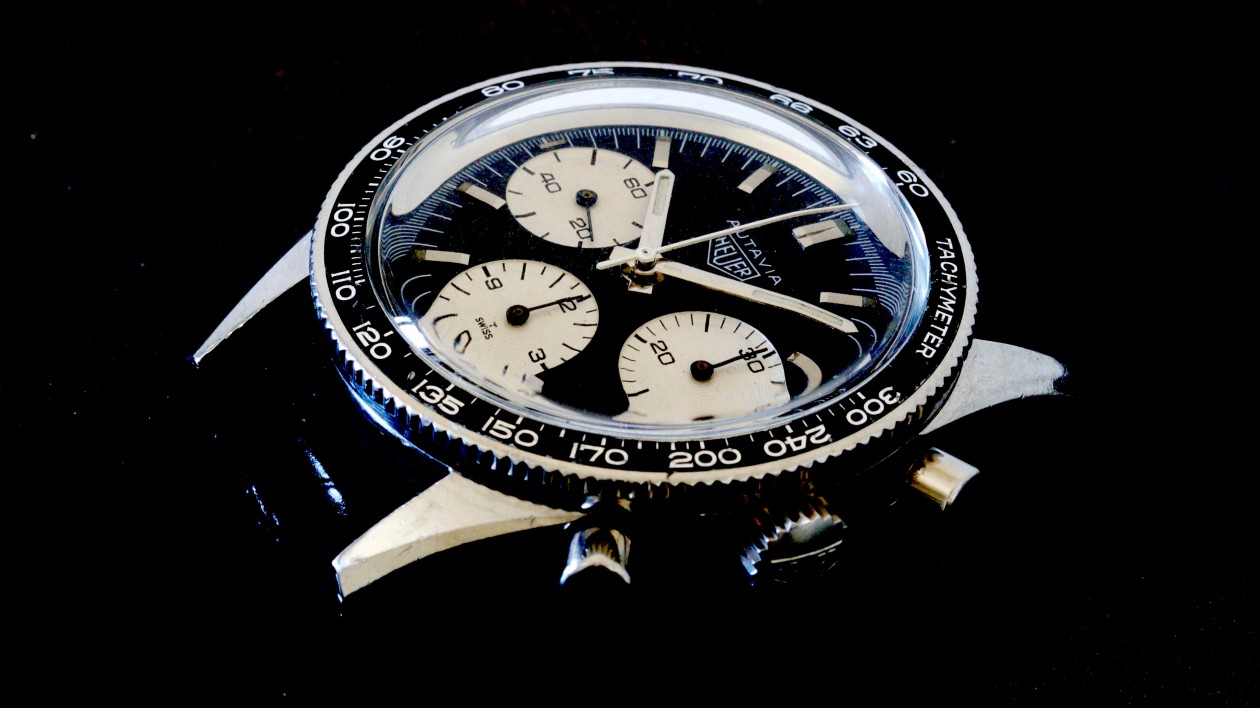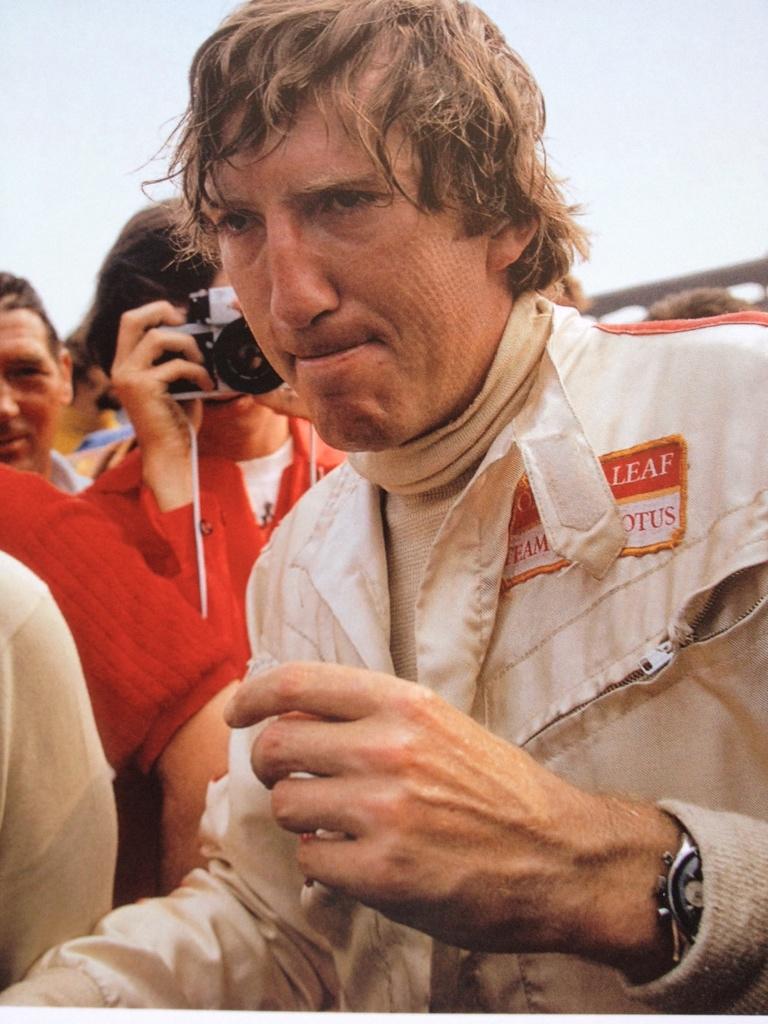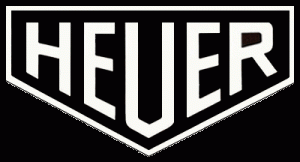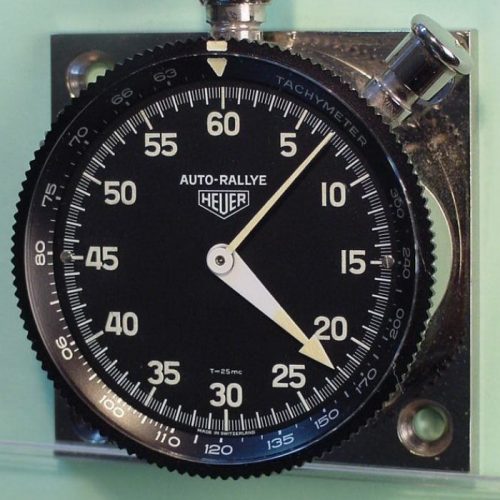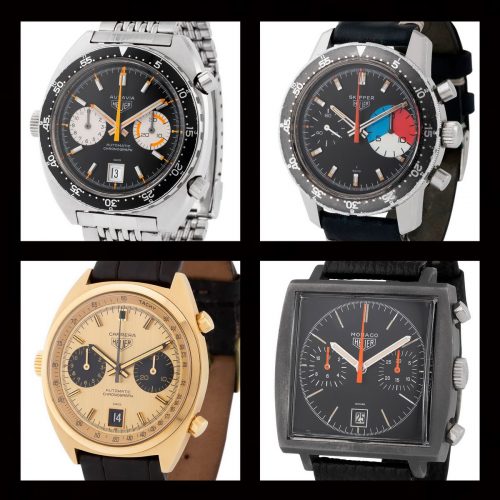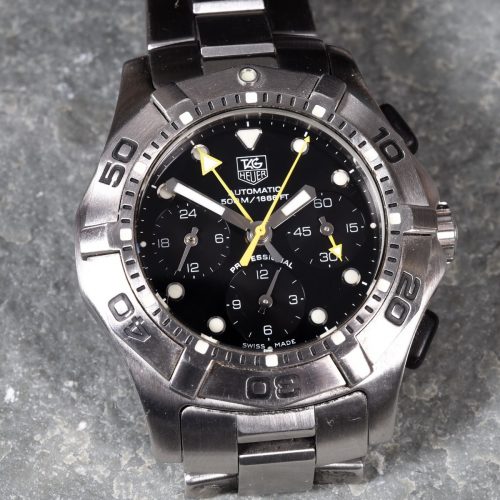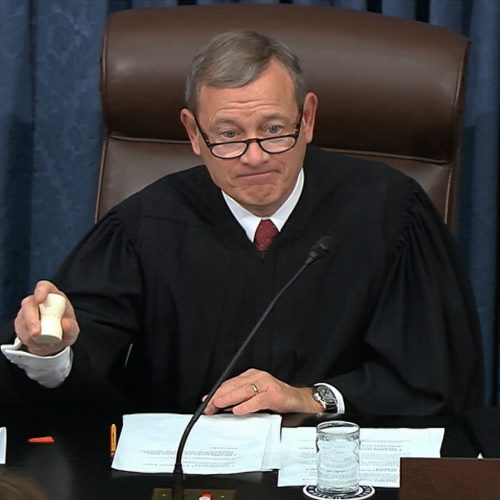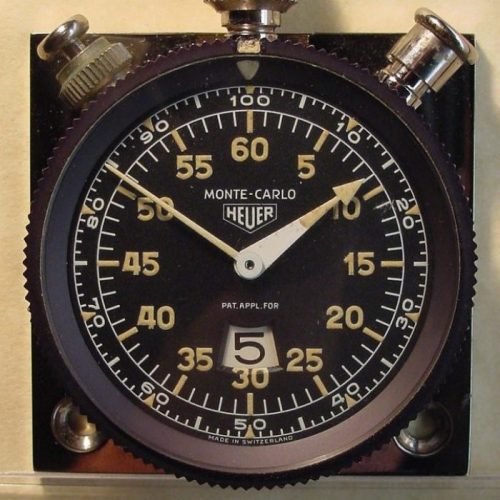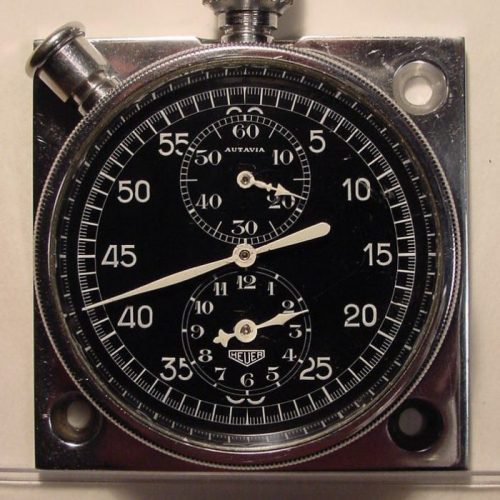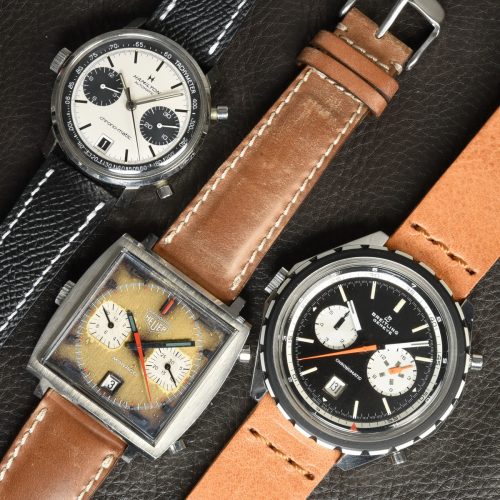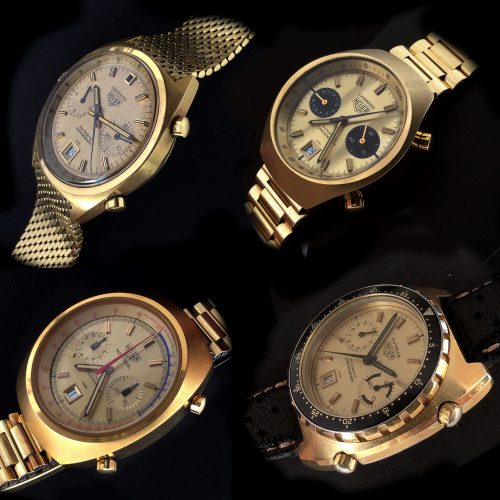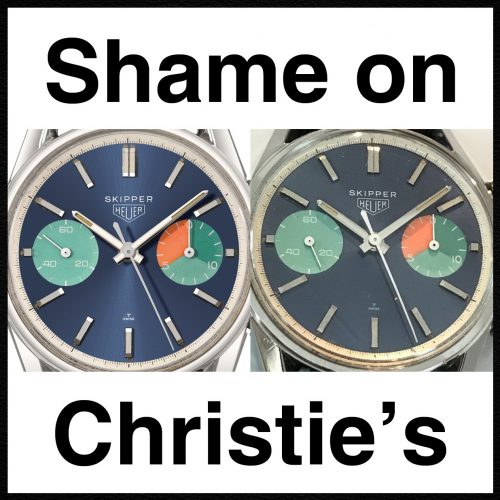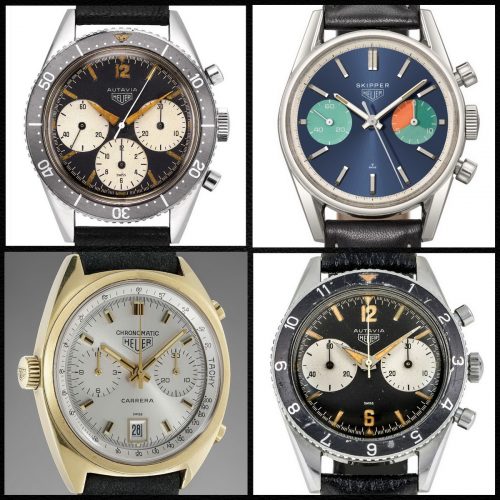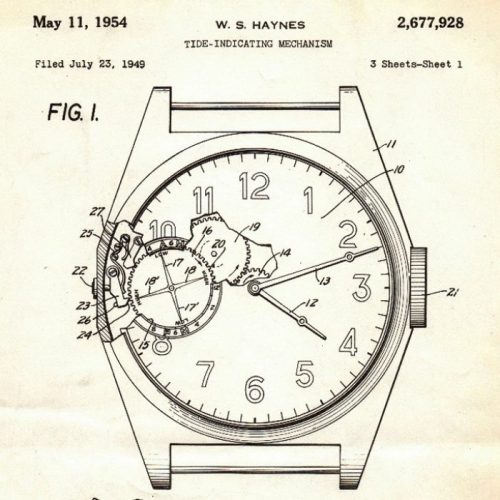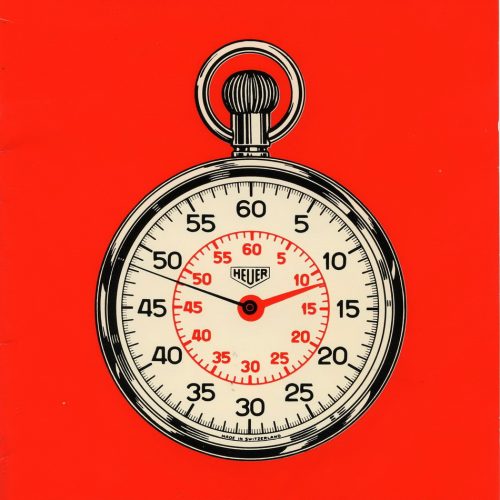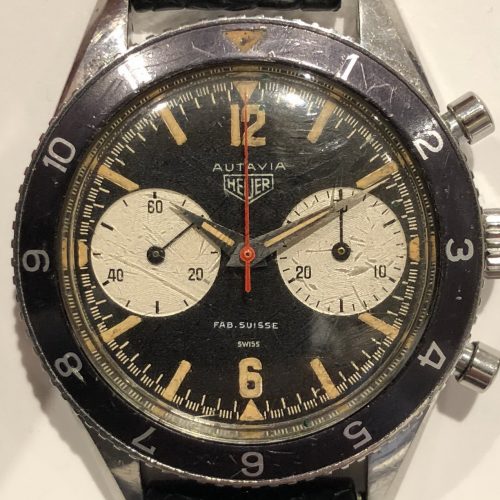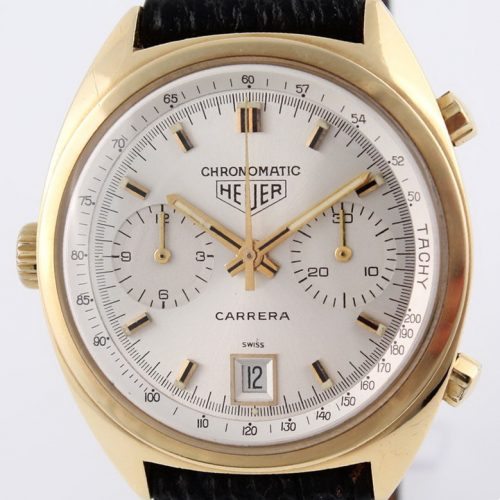With the release of each new racing movie, from “Grand Prix” and “Le Mans” in the golden age of motor sports to the more modern “Days of Thunder” (1990) and “Rush” (2013), there comes the challenge of identifying the watches worn by the racers. In these contests, the Heuer brand has taken more than its share of the podiums. Racer James Garner wore a Heuer Carrera in several of his films and the Heuer Monaco has come to be so closely identified with Steve McQueen, that to this day enthusiasts refer to the model with the blue dial and the white registers as the “McQueen”.
So with the release of the movie Ford v. Ferrari this weekend (November 15, 2019), we again face the task of identifying the watches worn by the racers. “Ford v. Ferrari” tells the story of car builder Carroll Shelby (played by Matt Damon), who had done a bit of racing himself, including a win at Le Mans in 1959. Shelby teams with racer Ken Miles (played by Christian Bale), to challenge Ferrari at the 1966 running of Le Mans, after Ferrari had won the race for the previous six years.
[In the first version of this posting (November 17, 2019), we correctly identified the watch worn by Damon as a Heuer Carrera and the watch worn by Christian Bale as a Heuer Autavia. Immediately after we published this posting, TAG Heuer confirmed that it had supplied these watches for Damon and Bale, and provided information as to the versions of these watches worn by the stars. We have updated this posting to include the information supplied by TAG Heuer.]
Racing enthusiasts all know the basic plot of the 24 Hours of Le Mans, 1966. Ken Miles (driving a Ford GT-40 with Dennis Hulme) leads late in the race, with two other Ford GT-40s running second and third. With Miles holding a lead of four laps, he receives team instructions to slow his pace, so that the three Fords can cross the finish line side-by-side-by-side. Miles and the other two GT-40s created this perfect photo finish, but the team of Bruce McLaren and Chris Amon is declared the winner, as their car had been positioned 8 meters behind the Miles / Hulme car on the starting grid, so that their car covered a greater distance during the 24 hours of the race. In terms of Ford’s battle with Ferrari, it was “mission accomplished” for Ford, with the two top Ferraris finishing 8th and 10th, far behind the Fords. An additional 10 Ferraris started the race, but retired during the 24 hours. Porsches finished the race running 4th, 5th. 6th and 7th, but the closest of these was 21 laps behind the leading GT-40s.
For Ken Miles, the 1966 Le Mans race represented a triumph and a tragedy. On the track, he was in position to easily win the race, and with it the endurance racing triple crown for 1966, as he had already won the 24 Hours of Daytona and the 12 Hours of Sebring. By following “team orders” to create the photo finish and because of the rules interpretation by the race organizers, he was denied this victory at Le Mans. Two months later, Ken Miles was killed, while testing a race car at Riverside, California.
Matt Damon — Heuer Carrera, Reference 7753 SN
In terms of the watch spotting, Damon provides an easy target. We see him wearing what can only be a two-register Heuer Carrara, with a white dial and black registers, the Reference 7753.
While several brands offered two register chronographs with white dials and black registers, it is the distinctive profile of the side of the case and lugs that allows us to identify Damon’s watch as a Carrera.
We deduct points from the costume designer, however, as the events in the movie focus on the 1966 running of Le Mans, while the Carrera Reference 7753 was only introduced circa 1970.
Still, the Carrera Reference 7753 SN is a great choice for a racer, capturing the style of the 1960s. The white dial with the contrasting registers also proves to be very visible on the screen.
There is also a historic connection between Carroll Shelby and the Heuer Carrera. When Carroll Shelby was running his automobile company and his racing team, he ordered special editions of the Carrera 45 Dato, which had the Shelby Cobra logo on the dial.
Christian Bale — Heuer Autavia, Heuer Autavia, Reference 2446 T
It was initially more difficult to identify the watch that Christian Bale wears, as Ken Miles, for the reason that Bale seems to wear his watch with the dial on the inside of his wrist, rather than on top of his wrist. Also, while Matt Damon wears his watch in every scene, Bale does not wear a watch in most of the scenes. Rumor suggested that the watch is a Heuer Autavia, and soon after we published this posting TAG Heuer confirmed that Bale is wearing an Autavia (as described in detail below).
As with the choice of the Carrera, Reference 7753 for Matt Damon, the costume designer faces some deduction in points, in selecting the “Rindt” Autavia for Christopher Bale, as that version was only introduced in 1968. We can excuse this choice on the basis that the earlier models of the Autavia, which a racer would have been wearing circa 1965 / 1966, are far more rare (and expensive) than the later models. In any event, this three-register Autavia, with the black dial and white registers, a great choice for Bale, a nice contrast to the two register Carrera that Damon is wearing, with its white dial and black registers.
Matt Damon’s Watch: Heuer Carrera 30 — Reference 7753 SN
When the Heuer Carrera was introduced in 1963, there were two versions of the chronograph. The Carrera 12 was a three-register chronograph, powered by the Valjoux 72 movement. The Carrera 45 was a two-register chronograph, powered by the Valjoux 92 movement. The Carrera 30, Reference 7753, came in 1970, when Heuer began using the Valjoux 7730 movement.
Heuer offered 10 versions of the Carrera 30, with differentiating elements being the colors of the dials, white or black, the use of matching or contrasting registers, and the use of scales for tachymeter and decimal minutes calculations.
The Reference 7753 SN has a white dial with black registers, with no extra scales on the dial.
[Photos above courtesy of Shuck the Oyster; used with permission]
There are a couple of interesting variations of the Carrera 30, Reference 7753. Heuer made a special version of the Carrera 30 for the Belgian Air Force, which is distinctive in having a black dial and Arabic numerals. This watch is not marked with the “Carrera” name.
Though not technically a “Carrera” it is also noteworthy that the first version of the Skipper chronograph resided in the Reference 7753 case. This Skipper, known to collectors as the “Skipperrera” used a modified version of the Valjoux 7730 movement, geared for the 15-minute countdown.
Christian Bale’s Watch: Heuer Autavia – Reference 2446, Third Execution Dial (Tachymeter Bezel)
Heuer introduced the Autavia in 1962. The first executions of the Autavia had a screw-back case with a wide bezel, dials with oversized registers (sometimes called “Big Subs”), and dauphine shaped hands. By around 1968, Heuer had switched to a second version of the screw-back case for the Autavia, which had a narrower bezel. On these models, the registers on the dial were smaller (called the “third execution” dial), and the hands were simple “index” or stick-shaped.
Autavias with the second execution screw-back cases are notable for another reason. These were the first chronographs made by Heuer that offered a Tachymeter bezel (as an alternative to the hours or minutes bezels). The tachymeter bezel allows the racer, navigator or crew member the ability to convert the elapsed time over a measured distance into the speed for that distance. The tachymeter bezel would be used by Heuer on versions of the Autavia, into the 1980s.
This second execution screw-back case, with the third execution dial, was the model worn by Austrian Formula One world champion Jochen Rindt, with collectors referring to this model as the “Rindt” Autavia. The Autavia worn by Rindt had a minutes bezel.
The re-issue of the Autavia introduced by TAG Heuer in 2017 was based on this version of the Autavia, from the 1960s.
Further Reading — The Watches Worn by Carroll Shelby and Ken Miles
Monochrome Watches — Spotted The Cool Watches of Shelby and Miles, Back in The Days and in Movie “Ford v. Ferrari” — legendary watch spotter Nick Gould does to digging and discovers the watches that Carroll Shelby and Ken Miles actually wore. Ken Miles regularly wears a Breitling Co-Pilot, Reference 765. Shelby usually does not wear a watch, but is occasionally spotted wearing a Rolex, including while winning the 24 Hours of Le Mans in 1959.
Further Reading and Viewing — Le Mans 1966
Wired — Ford v Ferrari Overlooks the Best Part of the Racing Rivalry — suggests that the real achievement of the Shelby team was in the engineering of the new GT-40.
Business Insider (video) – The Real Story Behind “Ford v Ferrari” — tells the story of the 1996 24 Hours of Le Mans, with the historical background of the race.
DailySportsCar.com — Le Mans 1966: The Golden Mystery — the story of the finish of the 1966 Le Mans 24 Hours.
Road & Track — Ken Miles: An Appreciation — covers the racing career and personality of Ken Miles.
Esquire — The True Story of Ken Miles’ Mysterious Death That Ford v. Ferrari Left Out — considers the mysterious crash that took Ken Miles’ life, two months after the 1966 Le Mans race.
MyClassicCarTV (video) — Carroll Shelby – The Lost Interview — Carroll Shelby tells the story of his life, including his racing career, his objective of building cars, and the development of the Cobras and GT-40s, that would beat Ferrari at Le Mans.
Petersen Automotive Museum (video) — 8 Meters: Triumph, Tragedy and a Photo Finish at Le Mans — Includes interviews with several of the team members.
Further Reading and Viewing — The Making of “Ford v Ferrari”
Sports Illustrated — Fueled by Star Power, ‘Ford v Ferrari’ Captures a Bygone Era of Ingenuity — absolutely everything you might want to know about the making of “Ford v Ferrari”, including how Matt Damon and Christian Bale connected with motorsports and how the racing scenes were filmed.
Los Angeles Times — In ‘Ford v Ferrari’, famed Le Mans racetrack came to life in Agua Dulce — Describes many of the locations used in the filming, including the racetracks, the factories, etc.
The Hollywood Reporter — Designing the Contrasting Worlds of ‘Ford v. Ferrari’ — focuses on the costume design for the movie.
IndieWire — ‘Ford v Ferrari’: Redefining the Racing Genre with the Powerful Sound of the ‘Perfect Lap’ — discusses the sound design of “Ford v Ferrari”, and specifically the sounds of the Fords and Ferraris.
Jeff Stein
First Published, November 17, 2019
Updated, November 19, 2019 (to include information provided by TAG Heuer)
